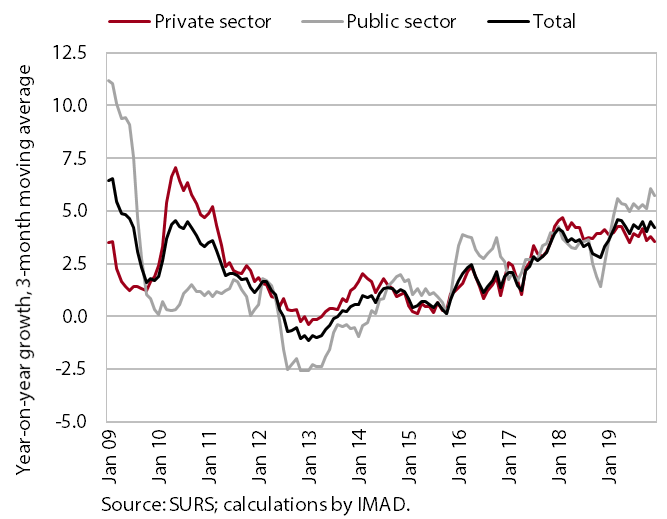Charts of the Week
Current economic trend from 17 to 21 February 2020: labour market and wages
Last year’s employment growth mainly reflected the increased hiring of foreign workers, while higher wage growth arose largely from wage rises in the public sector.
Labour market, December 2019 – January 2020

Last year the number of employed persons increased further. It increased 2.5% year on year (the most in construction and at above-average rate also in transportation and storage and accommodation and food service activities), which is considerably less than in 2018 (3.2%). Under conditions of demographic change and the shortage of domestic workers, employment growth continues to be driven by the hiring of foreigners, whose contribution to total employment growth exceeded 70% last year. With the slowdown in economic activity and the low unemployment rate, the decline in the number of unemployed persons moderated as well. At the end of January, 79.841 persons were registered as unemployed, 3.6% fewer than in the same period of the previous year.
Wages, December 2019

Higher wage growth in 2019 (4.3%; in 2018, 3.4%) was mainly due to stronger growth in the public sector. This was a consequence of wage rises agreed with the trade unions at the end of 2018 and regular promotions and, to a lesser extent, the increase in the minimum wage at the beginning of 2019. In the private sector, wage growth was similar to that in 2018, amid relatively low unemployment, the shortage of suitably skilled workforce and good business results. The highest wages rises were recorded in some market services that have larger shares of minimum-wage recipients (administrative and support service activities, accommodation and food service activities, trade).
